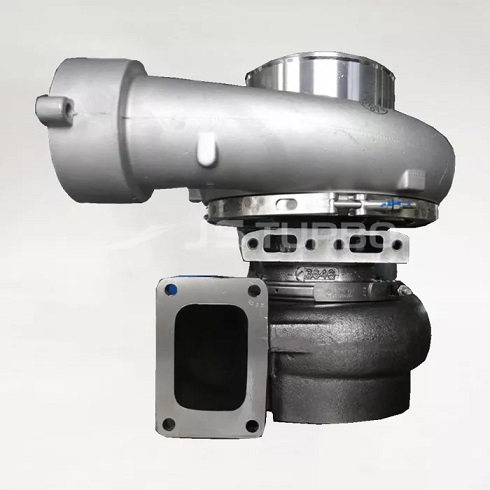
What is the principle of turbocharger
2022-12-23 21:30First of all, let me talk about the general structural principle of the turbocharger. The exhaust gas turbocharger is mainly composed of a pump wheel and a turbine, and of course there are other control components. The pump wheel and the turbine are connected by a shaft, which is the rotor. The exhaust gas from the engine drives the pump wheel, and the pump wheel drives the turbine to rotate. After the turbine rotates, it pressurizes the intake system. The supercharger is installed on the exhaust side of the engine, so the working temperature of the supercharger is very high, and the speed of the rotor is very high when the supercharger is working, which can reach hundreds of thousands of revolutions per minute. Such a high speed and temperature Common mechanical needle or ball bearings cannot work for the rotor, so turbochargers generally use full floating bearings, which are lubricated by oil and cooled by coolant. In the past, turbochargers were mostly used on diesel engines, and now some gasoline engines also use turbochargers. Because gasoline and diesel burn in different ways, the form of turbocharger used in the engine is also different.
Gasoline engines are different from diesel engines. What enters the cylinder is not air, but a mixture of gasoline and air. If the pressure is too high, it is easy to detonate. Therefore, the installation of turbochargers must avoid deflagration, which involves two related issues, one is high temperature control, and the other is ignition time control.
After forced supercharging, the temperature and pressure of gasoline engine compression and combustion will increase, and the tendency of deflagration will increase. In addition, the exhaust temperature of a gasoline engine is higher than that of a diesel engine, and it is not suitable to increase the valve overlap angle (the time when the intake and exhaust valves are opened at the same time) to strengthen the cooling of the exhaust gas, and reducing the compression ratio will cause insufficient combustion. In addition, the speed of the gasoline engine is higher than that of the diesel engine, and the air flow changes greatly, which can easily cause the turbocharger to lag in response. In response to a series of problems arising from the use of turbochargers for gasoline engines, engineers have made targeted improvements one by one, so that gasoline engines can also use exhaust gas turbochargers.

